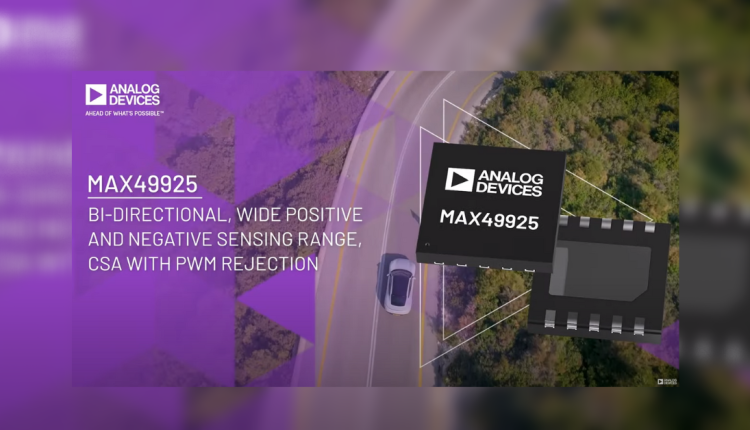The MAX49925: A Bidirectional Current-Sense Amplifier for Automotive and High-Voltage Applications
In the rapidly evolving world of high-voltage automotive applications, design engineers often face challenges associated with large transient environments, particularly in 48V hybrid and electric vehicle (HEV) systems. The MAX49925, a bidirectional current-sense amplifier (CSA), is emerging as a game-changer to address these challenges, offering innovative features and robust performance.
The MAX49925 shines with an impressive input common-mode range of -40V to +76V, making it the ideal choice for 48V HEV applications where large automotive transients are common. Its robust design includes an extended input protection range from -42V to +80V, offering reliable safeguarding against reverse-battery and high-voltage spikes. This extensive protection range provides a beneficial byproduct – it relaxes TVS requirements, resulting in a lower Bill of Materials (BOM) cost and reduced component size.
In addition, the MAX49925 stands out for its suitability for phase-current monitoring of inductive loads such as motors and solenoids, especially in scenarios where pulse-width modulation (PWM) is used to control the drive voltage and current. It employs an innovative technique to help reject common-mode input PWM edges with impressive slew rates up to and beyond 500V/μs.
Operating over a full -40°C to +125°C temperature range, the MAX49925 runs from a supply voltage of +2.7V to +5.5V. It is compact, coming in a 3mm x 3mm, 10-pin TDFN package with side-wettable flanks.
Applications for the MAX49925 are plentiful, making it a versatile solution for design engineers. Suitable applications include PWM H-Bridge Motor In-Line/In-Phase/Winding Current Sensing, Solenoid Current Sensing, Current Monitoring of Inductive Loads, Battery Stack Monitors, High Power DC Motors, and various automotive applications including 48V hybrid and electric vehicles (HEVs).
The MAX49925 brings to the table a rich set of features, robustness and versatility for various automotive and high-voltage applications, making it an attractive tool for design engineers working in these demanding fields.

